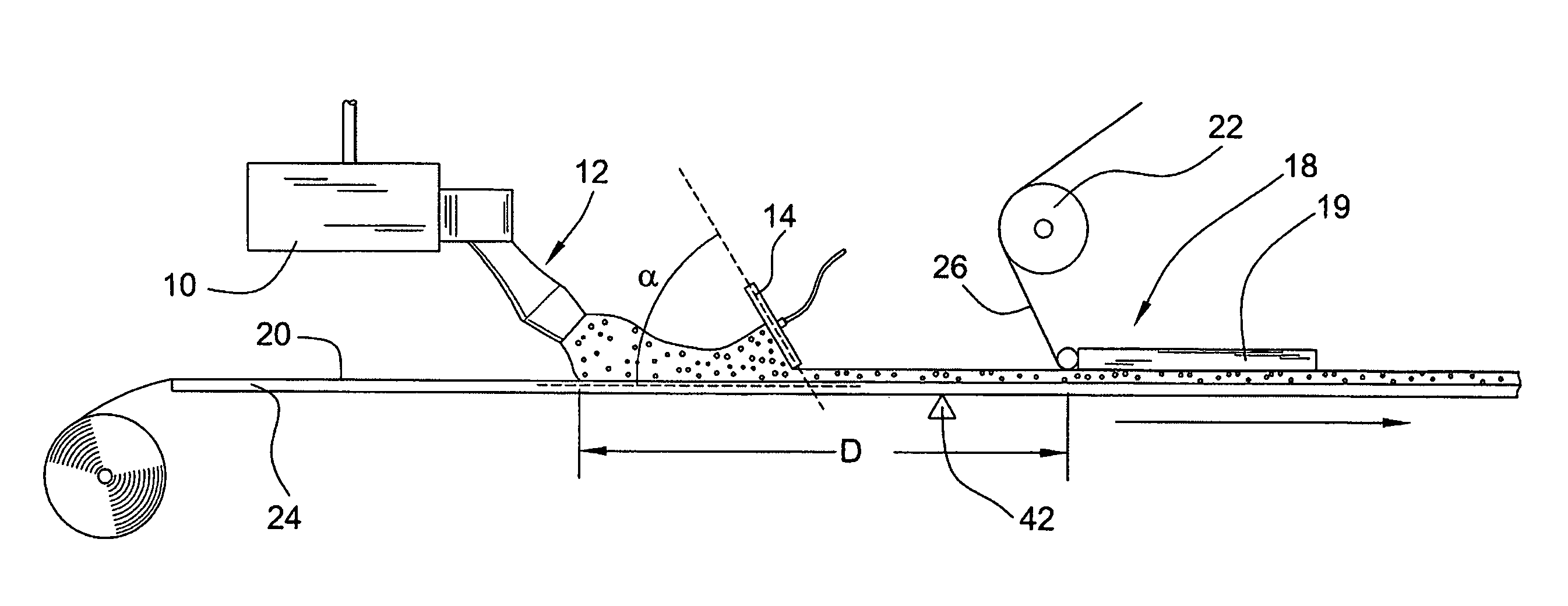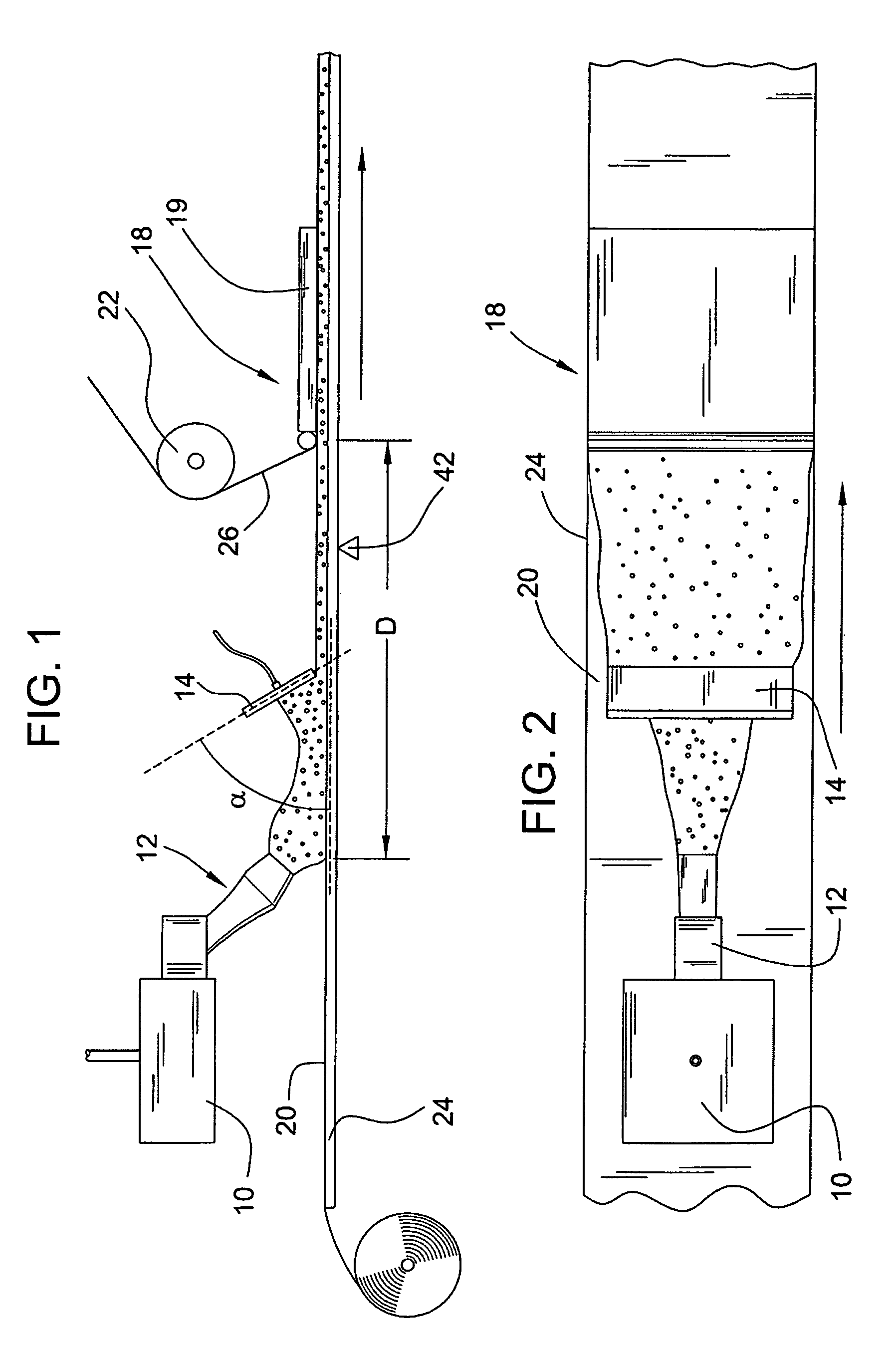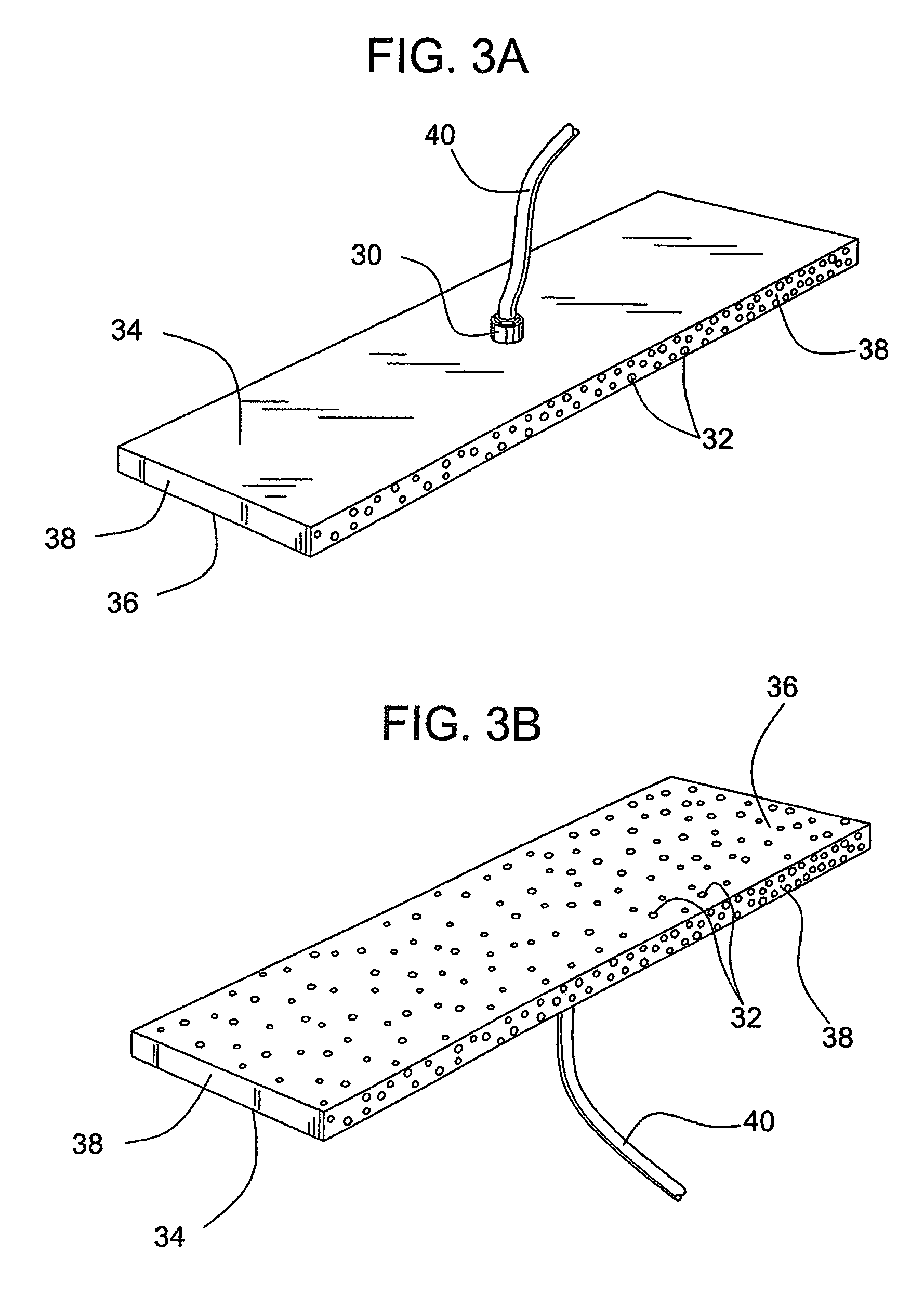Slurry spreader for cementitious board production
a cementitious board and slurry spreader technology, applied in the direction of water-setting substance layered product, turning machine accessories, drawing profiling tools, etc., can solve the problem of difficult uniform distribution, limited control of the thickness of the screeding device, and difficulty in achieving the effect of reducing the water to cementitious material ratio, facilitating the use of less water, and reducing the number of undesirable large gaps
- Summary
- Abstract
- Description
- Claims
- Application Information
AI Technical Summary
Benefits of technology
Problems solved by technology
Method used
Image
Examples
Embodiment Construction
[0020]Turning to FIGS. 1 and 2, a board forming system 1 includes a mixer 10 with a discharge outlet 12, a slurry spreader 14, a forming station 18, a backing layer 20, an optional cover layer roll 22, and preferably a forming table with a conveyor 24 to facilitate the continuous production of cementitious board product. In operation, cementitious slurry used for forming the core of the board is prepared in mixer 10 and discharged through discharge outlet 12 directly or indirectly onto backing layer 20. The discharge outlet (or depositing mechanism) can be any suitable discharge outlet. For example, suitable slurry discharge outlets are described in U.S. Pat. No. 6,874,930, which is incorporated by reference herein. The slurry from the mixer can be deposited directly onto the backing paper, although in some embodiments, the slurry from the mixer is deposited indirectly onto the backing layer, such as for example, onto a densified layer. In a preferred embodiment of the invention, su...
PUM
| Property | Measurement | Unit |
|---|---|---|
| length | aaaaa | aaaaa |
| angle | aaaaa | aaaaa |
| angle | aaaaa | aaaaa |
Abstract
Description
Claims
Application Information
 Login to View More
Login to View More - R&D
- Intellectual Property
- Life Sciences
- Materials
- Tech Scout
- Unparalleled Data Quality
- Higher Quality Content
- 60% Fewer Hallucinations
Browse by: Latest US Patents, China's latest patents, Technical Efficacy Thesaurus, Application Domain, Technology Topic, Popular Technical Reports.
© 2025 PatSnap. All rights reserved.Legal|Privacy policy|Modern Slavery Act Transparency Statement|Sitemap|About US| Contact US: help@patsnap.com



